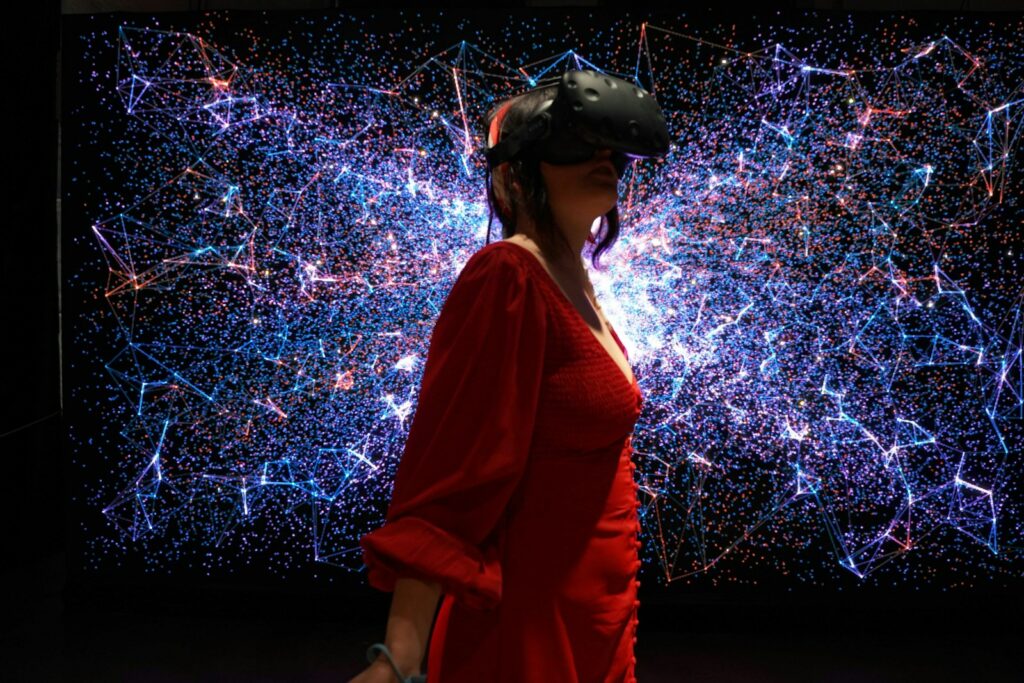In the rapidly evolving landscape of technology and media, Virtual Reality (VR) has emerged as a groundbreaking platform that has the potential to revolutionize how we consume content. From immersive gaming experiences to virtual tours of far-off destinations, VR offers a new dimension of engagement and interaction. Crafting effective content strategies for VR platforms requires a unique approach that leverages the capabilities of this medium. In this comprehensive guide, we will explore the intricacies of content strategies for VR platforms, providing insights, examples, and practical tips to help creators and businesses make the most out of this exciting frontier.
Understanding the VR Landscape
Before delving into content strategies, it’s crucial to have a clear understanding of the VR landscape. Virtual Reality is an immersive technology that transports users into a computer-generated environment, allowing them to interact with the environment and objects within it. VR can be experienced through specialized headsets or even through mobile devices, making it accessible to a wide range of users. The potential applications of VR are vast, spanning industries such as entertainment, education, healthcare, real estate, and more.
As the VR landscape continues to evolve, it’s essential to grasp the latest advancements and trends shaping the industry. From the development of more sophisticated hardware to the emergence of new software tools and platforms, staying abreast of these changes is crucial for content creators and developers alike. Additionally, understanding user behavior and preferences within VR environments can provide valuable insights for crafting immersive experiences that resonate with audiences. By continually monitoring the VR landscape, content creators can adapt their strategies to capitalize on emerging opportunities and stay ahead of the curve.

The Unique Challenges of VR Content Creation
Creating content for VR platforms presents a set of unique challenges that content creators need to address. Unlike traditional media, here are some of the unique challenges of VR content creation:
- VR places the user at the center of the experience, demanding a higher level of engagement and interactivity. This shift requires content creators to think beyond passive consumption and design experiences that keep users engaged and immersed.
- Factors like motion sickness, user comfort, and technical limitations need to be considered to ensure a seamless experience.
- The spatial nature of VR necessitates meticulous attention to detail in environment design to maintain immersion. Content creators must navigate the complexities of spatial audio and haptic feedback to enhance realism and presence.
- Balancing narrative coherence with user agency presents another hurdle, as users expect meaningful interaction within the virtual world.
- Optimizing content for various VR hardware configurations adds another layer of complexity, requiring adaptation without compromising quality.
Successfully tackling these challenges distinguishes exceptional VR content creators.
Building Content Strategies for VR Platforms: Key Considerations
Crafting effective content strategies for VR platforms demands a nuanced approach, weaving together elements of audience insight, strategic goal-setting, immersive design, storytelling prowess, and collaborative synergy. By navigating these considerations adeptly, creators can unlock the full potential of virtual reality, delivering captivating experiences tailored to diverse audiences and objectives.
Identifying Your Target Audience
As with any content strategy, understanding your target audience is paramount. VR experiences can vary widely, from casual gamers to professionals seeking training simulations. Define your audience’s demographics, interests, and preferences to tailor your content accordingly. For instance, an architectural firm might create VR walkthroughs of their designs to appeal to potential clients.
Setting Clear Objectives
Every content strategy should have clear objectives. Are you aiming to educate, entertain, or provide a specific experience? Setting concrete goals will guide the creation process and help measure the success of your VR content.
Leveraging the Immersive Nature of VR
VR’s power lies in its ability to create immersive environments. Capitalize on this by designing experiences that encourage exploration and interaction. For instance, a museum could offer a virtual gallery tour where users can interact with artifacts and artworks.
Storytelling in VR
Even in the realm of VR, storytelling remains essential. Craft narratives that unfold as users navigate the virtual world. Whether it’s a mystery to solve or a historical journey, a compelling story enhances user engagement.
Collaboration Between Creatives and Tech Experts
VR content creation often requires collaboration between creative professionals and technical experts. Artists, writers, designers, and developers must work together to ensure that the final product is both engaging and technically feasible.
In the dynamic landscape of VR content creation, the fusion of creative ingenuity and technical expertise is indispensable. Through collaborative efforts, creators can sculpt immersive narratives that captivate audiences, forging new frontiers of storytelling in the boundless realm of virtual reality.
Content Types and Strategies for VR Platforms
Various content types and strategies drive the dynamic landscape of VR platforms. From gaming realms to immersive educational modules, VR offers a diverse range of experiences. Let’s delve into key applications and strategies for leveraging this transformative technology.
Gaming and Interactive Experiences
Gaming is one of the most prominent applications of VR. Create immersive worlds where users can interact with the environment and other players. Ensure that gameplay mechanics and controls are intuitive, enhancing the overall experience.
360-Degree Videos and Virtual Tours
360-degree videos and virtual tours allow users to explore real-world or fictional environments. These are particularly effective for real estate, travel, and education industries. For instance, a university could provide virtual campus tours to prospective students.
Educational and Training Modules
VR’s potential for education and training is substantial. Develop modules that simulate real-world scenarios, offering learners a hands-on experience. Medical students, for example, can practice surgical procedures in a risk-free virtual environment.
Branding and Marketing Campaigns
Brands can leverage VR to create memorable marketing campaigns. By immersing customers in the brand’s world, companies can forge deeper connections. Car manufacturers, for instance, could offer virtual test drives.
Live Events and Virtual Conferences
Incorporate VR into live events and conferences to enhance engagement for remote attendees. Virtual conferences allow users to explore different booths, attend talks, and network, mirroring the physical experience.
Measuring Success in VR Content Strategies
In the realm of VR content strategies, success hinges on understanding user engagement and interaction. Monitoring these elements offers insights into immersion levels and user interest. Duration of interaction is another vital metric, reflecting content appeal and engagement depth. Moreover, feedback collection facilitates iterative improvements, ensuring that VR experiences evolve to meet user expectations and technical standards.
User Engagement and Interaction
Monitor how users engage with your VR content. Are they exploring the environment? Interacting with objects? Meaningful interactions indicate that users are immersed and interested.
Duration of Interaction
The time users spend within your VR experience is a crucial metric. Longer interaction times suggest that users find the content engaging and are invested in exploring the virtual world.
Feedback and Iteration
Collect user feedback to identify areas for improvement. VR content should be iterated upon to enhance the experience based on user suggestions and technical considerations.
The synergy between user engagement, duration of interaction, and iterative feedback loops forms the cornerstone of effective VR content strategies, driving continual enhancement and innovation in virtual experiences.
Conclusion
Crafting content strategies for VR platforms is a multidimensional endeavor that combines creativity, technical expertise, and a deep understanding of user behavior. By tailoring experiences to your target audience, setting clear objectives, and leveraging the unique capabilities of VR, you can create compelling and immersive content that resonates with users. As the VR landscape continues to evolve, embracing these strategies will position you at the forefront of this transformative technology.
FAQs
How can VR content benefit businesses beyond entertainment?
Virtual Reality content offers businesses a range of opportunities beyond entertainment. It can be used for employee training, virtual product showcases, architectural visualization, medical simulations, and more. By providing immersive experiences, VR content enhances engagement and understanding.
Do I need coding skills to create VR content?
While coding skills can be beneficial, they are not always necessary. Many platforms and tools offer user-friendly interfaces for creating VR content without extensive coding knowledge. However, collaborating with technical experts can help you achieve more complex and polished results.
What are some common challenges in VR content creation?
Motion sickness, technical limitations of VR hardware, and creating a seamless user interface are some of the common challenges in VR content creation. Additionally, optimizing content for different VR devices and ensuring compatibility across platforms can be demanding.
Is VR content accessible to everyone?
While VR content has become more accessible over time, there are still barriers to entry. Users need compatible hardware, such as VR headsets or smartphones, to experience VR content. However, innovations are being made to make VR more inclusive and accessible to a broader audience.
How can I measure the ROI of my VR content strategy?
Measuring the Return on Investment (ROI) for VR content can be challenging. Key metrics to track include user engagement, interaction time, user feedback, and the impact of VR content on achieving your predefined objectives (e.g., increased sales, improved training outcomes).
What industries can benefit the most from VR content strategies?
Numerous industries can benefit from VR content strategies. These include gaming, education, healthcare, real estate, automotive, tourism, and retail. Any field that can leverage immersive experiences to engage and educate its audience stands to gain from VR content.
How often should VR content be updated?
The frequency of VR content updates depends on the objectives, industry, and the pace of technological advancements. While some VR experiences may require frequent updates to stay relevant, others, such as architectural visualizations, may have a longer shelf life. Regularly reviewing user feedback and technological developments will guide the update schedule.
What role does user feedback play in VR content strategies?
User feedback is invaluable in refining and improving VR content. It provides insights into user preferences, pain points, and areas for enhancement. Incorporating user feedback helps create more engaging and user-centric experiences, ultimately contributing to the success of your content strategy.




